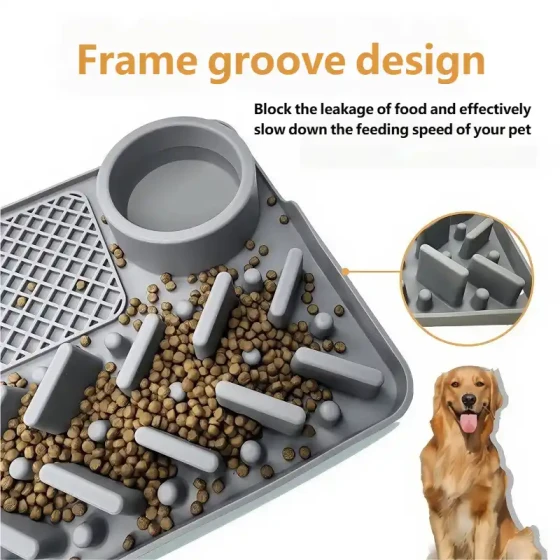How to Train a Pet Labrador
1. Training Key Points
1. Do not be greedy; train only one action per week and repeat the training every day.
2. Commands should be loud, clear, unambiguous, and not similar to other commands. It’s best to use one word. For example:
(1) Stand up — "Stand";
(2) Sit down — "Sit";
(3) Lie down (all four limbs stretched) — "Lie";
(4) Lie down (all four limbs curled) — "Down";
(5) Shake hands — "Hand" or "Shake";
(6) Salute — "Salute" or "Bow";
(7) Spin (standing in circle) — "Spin",
(8) Roll over (lying down) — "Roll";
(9) Charge — "Charge".
3. When speaking commands, accompany them with corresponding hand signals. Movements should be crisp and clean without dragging. For example:
(1) Stand up — index finger pointing up;
(2) Sit down — index finger pointing down;
(3) Lie down (all four limbs stretched) — form a fist with palm down and then extend the palm down (let the dog see the fist first, then the extended palm down);
(4) Lie down (all four limbs curled) — extend the palm down, then form a fist (let the dog see the extended palm first, then the fist);
(5) Shake hands — extend your right hand sideways and reach toward the dog’s chest;
(6) Salute — hold fists together and shake them up and down in the air;
(7) Spin (standing in circle) — use the index finger to draw a circle in the air downward;
(8) Roll over (lying down) — hold the palm sideways and draw circles forward in the air;
(9) Charge — palm upright with fingertips up, push forward with elbow.
4. When repeating training the next day, even if the dog performs passively, still give it a small piece of food; but if the dog performs actively, consider giving a larger piece of food. As long as the dog understands and basically completes the action, it must be rewarded with food such as a small piece of ham sausage, a little beef jerky, or its favorite treat.
5. The dog’s initial actions may not be very standard but should be highly praised. Patting its neck or rubbing its back are all forms of praise.
6. Try not to scold your dog. Like children, the more praise they get, the better they perform; the more criticism, the worse they do.
7. Before starting the second week, review the previous action before teaching a new one.
8. Only continuous repetitive training can enable the dog to associate food with the action to form conditioned reflexes and sensory stimulation.
2. Examples of Training Actions
1. Stand Up
Use your hand to support the dog to stand firmly on its four limbs with the command "Stand" and the corresponding hand signal. Hold the posture for 10–15 seconds, then release your hand.
He will still stand there motionless; at this time, your other hand should prepare his favorite food, such as low-salt ham sausage, feed him a small piece, he will happily carry it in his mouth and run around. Repeat the above until he hears your command, sees your gesture, and stands properly without needing your hand.
2. Sit Down
Use your hand to support the dog to sit down with its buttocks on the ground, say the command "Sit" and give the corresponding hand signal. Hold the posture for 10–15 seconds, then release your hand.
He will sit still; at this time, your other hand should prepare his favorite food, such as low-salt ham sausage, feed him a small piece. He will happily carry it in his mouth and run around. Repeat the above until he hears your command, sees your gesture, and sits properly without needing your hand.
3. Lie Down (Stretched)
Use your hand to press the dog’s back with some force, making him lie on the ground, and with the other hand pull his four limbs to stretch out.
At the same time, give the command "Lie" and the corresponding hand signal, hold the posture for 10-15 seconds. He will lie still, then release your hand. Your other hand should prepare his favorite food, such as low-salt ham sausage, feed him a small piece after releasing your hand. He will happily carry it in his mouth and run around. Repeat until he hears your command, sees your gesture, and lies down without needing your hand to press.
4. Lie Down (Curled)
Let the dog stand on all fours, then press his back with some force to make him lie down, say the command "Down" and give the corresponding hand signal, hold the posture for 10–15 seconds, then release your hand.
This time your other hand should prepare his favorite food, such as low-salt ham sausage. Feed him a small piece after releasing your hand. He will happily carry it in his mouth and run around. Repeat until he hears your command and lies down without needing your hand to press.
5. Spin
First, lift the dog’s two front legs with your hands, letting the hind legs stay on the ground, using both hands alternately to spin the dog in place.
At the same time shout the command "Spin", then hold the dog’s two front legs with one hand, continue spinning until he can spin on his own with your light support. Then say "Spin" and give the corresponding hand signal, let him spin for 10–15 seconds, then release your hand.
At this time, your other hand should prepare his favorite food, such as low-salt ham sausage. Feed him a small piece after releasing your hand. He will happily carry it in his mouth and run around. Repeat until he spins after hearing your command and seeing your hand signal without needing your hand.
6. Roll Over
Press the dog’s back with one hand to make him lie down, while the other hand supports his belly and gently rolls him over. After rolling, let him lie on the ground or stand on all fours, say the command "Roll" with a clear hand signal, make him lie down and roll again, continuing for 10–15 seconds, then release your hand.
At this time, your other hand should prepare his favorite food, such as low-salt ham sausage, feed a small piece.
He will happily carry it in his mouth and run around. Repeat until he rolls over by command and hand signal without you needing to move him.
7. Shake Hands
Hold the dog’s two front paws to make him stand, then use your right hand to hold the dog’s right front paw and gently shake up and down, saying the command "Shake" and giving the hand signal, keep this for 10–15 seconds, then release your hand.
At this time, your other hand should prepare his favorite food, such as low-salt ham sausage, feed him a small piece. He will happily carry it in his mouth and run around. Repeat until on hearing your command and seeing you extending your right hand, he can extend his paw for you to shake.
8. Salute
Use your both hands to hold the dog’s front paws, lifting him to stand straight.
Then bring the two front paws together and shake them up and down, say the command "Salute", give the hand signal, hold the posture for 0–15 seconds, then release.
At this time, give prepared favorite food, such as low-salt ham sausage, feed a small piece.
He will happily carry it in his mouth and run around. Repeat until on hearing your command and seeing you clench your fists and shake them up and down, he can extend his front paws and perform the salute.
3. Precautions:
Training should be done before the dog eats. Do not train after the dog is full; first, it is not good for the dog's body, and second, a full dog has no motivation to train.
——"Happy Pet Channel."

-560x560.webp)
-560x560.webp)


